Manual de uso Haier DW12-CBE6 IS Lavavajillas
¿Necesita un manual para su Haier DW12-CBE6 IS Lavavajillas? A continuación puedes ver y descargar el manual en PDF gratis en español. Este producto actualmente tiene 11 preguntas frecuentes, 0 comentarios y tiene 0 votos. Si este no es el manual que desea, , contáctenos.
¿Su producto tiene algún defecto y el manual no ofrece ninguna solución? Vaya a Repair Café para solicitar un servicio de reparación gratuito.
Manual de uso
Loading…


Loading…
Puntuación
Dé su opinión de la Haier DW12-CBE6 IS Lavavajillas calificando el producto. ¿Quiere compartir su experiencia con este producto o hacer una pregunta? Deje un comentario en la parte inferior de la página.Más sobre este manual
Entendemos que es bueno tener un manual en papel para tus Haier DW12-CBE6 IS Lavavajillas. Siempre puedes descargar el manual desde nuestro sitio web e imprimirlo tú mismo. Si deseas tener un manual original te recomendamos contactar con Haier. Es posible que puedan proporcionar un manual original. ¿Estás buscando el manual de tu Haier DW12-CBE6 IS Lavavajillas en otro idioma? Elija su idioma preferido en nuestra página de inicio y busque el número de modelo para ver si lo tenemos disponible.
Especificaciones
| Marca | Haier |
| Modelo | DW12-CBE6 IS |
| Categoría | Lavavajillas |
| Tipo de archivo | |
| Tamaño del archivo | 1.54 MB |
Todos los manuales para Haier Lavavajillas
Más manuales de Lavavajillas
Preguntas frecuentes sobre Haier DW12-CBE6 IS Lavavajillas
Nuestro equipo de atención al cliente busca información útil sobre los productos y responde a las preguntas frecuentes. Si encuentra inexactitudes en las preguntas frecuentes, indíquenoslo usando nuestro formulario de contacto.
Una vez que el lavavajillas ha terminado el ciclo de lavado, el compartimento de la pastilla no se ha abierto. ¿Cómo es posible? Verificado
Este problema a menudo ocurre cuando hay vajilla que bloquea el compartimento. Revíselo antes de poner en marcha el lavavajillas.
Ha sido de gran ayuda (7966) Leer másEl lavavajillas ya no calienta el agua. ¿Por qué? Verificado
Es probable que el elemento calefactor esté defectuoso. Hágalo reemplazar. En caso de duda, póngase en contacto con el fabricante.
Ha sido de gran ayuda (7432) Leer más¿Puedo usar sal común en mi lavavajillas? Verificado
No. La sal común contiene sustancias que pueden dañar su electrodoméstico.
Ha sido de gran ayuda (3174) Leer más¿Necesito enjuagar mis platos antes de ponerlos en el lavavajillas? Verificado
No es necesario enjuagar los platos, pero hay que quitar los restos grandes, duros y grasientos ya que podrían obstruir el desagüe con el tiempo.
Ha sido de gran ayuda (1280) Leer más¿Puedo abrir el lavavajillas mientras está funcionando? Verificado
La mayoría de los lavavajillas están equipados con una parada de agua, que hace que el programa se detenga inmediatamente cuando se abre la puerta, por lo que no saldrá agua. Con algunos modelos, esto puede causar problemas con el tiempo. Con los lavavajillas incorporados es posible que si se abren con frecuencia mientras están en funcionamiento se pueden producir daños por el agua en los armarios circundantes debido al vapor que se libera.
Ha sido de gran ayuda (1029) Leer más¿Debo abrir el lavavajillas después de que termine de funcionar para que los platos se sequen más rápido? Verificado
Depende del tipo de lavavajillas y de su ubicación. Algunos lavavajillas están equipados con una función que seca los platos después del programa de lavado. En ese caso, abrir el lavavajillas no tiene sentido. Con los lavavajillas incorporados es posible que si se abren con frecuencia mientras están en funcionamiento se pueden producir daños por el agua en los armarios circundantes debido al vapor que se libera.
Ha sido de gran ayuda (825) Leer másUna vez que el lavavajillas ha terminado su ciclo, los platos de plástico todavía están húmedos, pero el resto no. ¿Porqué es eso? Verificado
El plástico es un mal conductor del calor, lo que permite que los productos se enfríen rápidamente. La humedad que permanece en él se evapora mucho menos que, por ejemplo, en la cerámica o el metal.
Ha sido de gran ayuda (741) Leer más¿Puedo conectar un lavavajillas a un cable de extensión? Verificado
Los electrodomésticos que requieren una gran cantidad de energía, como un lavavajillas, no se pueden conectar a todos los cables de extensión. Vea cuál es el uso de energía del lavavajillas, que se indica en vatios, y verifique si el cable de extensión puede manejar esto. Hay cables de extensión con cables más gruesos que están hechos para manejar electrodomésticos más grandes.
Ha sido de gran ayuda (672) Leer más¿Es un problema tener rayones en el metal del interior del lavavajillas? Verificado
El interior de la mayoría de los lavavajillas está hecho de acero inoxidable y no se ve afectado por los arañazos.
Ha sido de gran ayuda (666) Leer más¿Puedo poner objetos de madera como espátulas y tablas de cortar en el lavavajillas? Verificado
No. Los objetos de madera pueden dañarse o deformarse en el lavavajillas. Además, las fibras de madera que se desprenden pueden dañar el lavavajillas. Las tablas de cortar de madera a menudo se fabrican con pegamento que puede soltarse después de estar en el lavavajillas varias veces.
Ha sido de gran ayuda (656) Leer más¿Puedo poner sartenes con teflón en el lavavajillas? Verificado
Sí tu puedes. Sin embargo, la sartén se desgastará más rápido que cuando se limpia a mano. Cuando limpie una sartén con teflón a mano, nunca use un estropajo, use una esponja o un paño suave.
Ha sido de gran ayuda (656) Leer más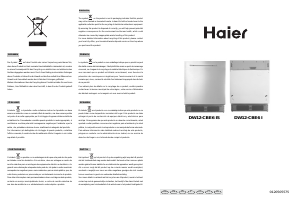

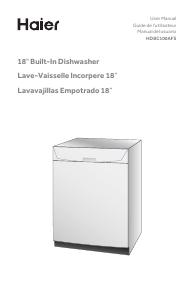
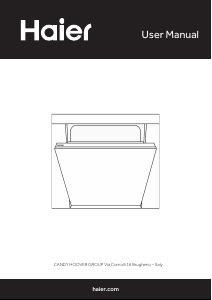

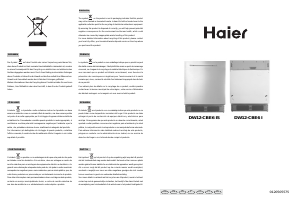

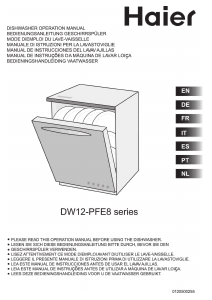
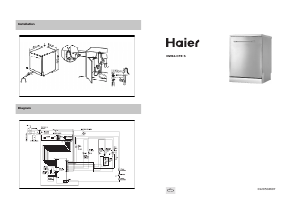
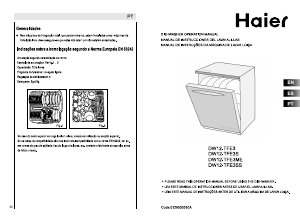
Únase a la conversación sobre este producto
Aquí puedes compartir lo que piensas sobre Haier DW12-CBE6 IS Lavavajillas. Si tiene alguna pregunta, primero lea atentamente el manual. Puede solicitar un manual utilizando nuestro formulario de contacto.